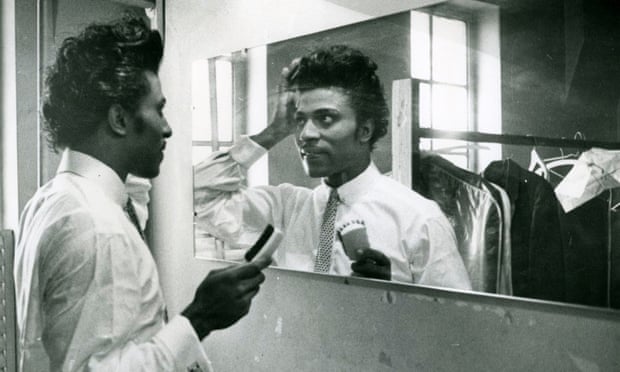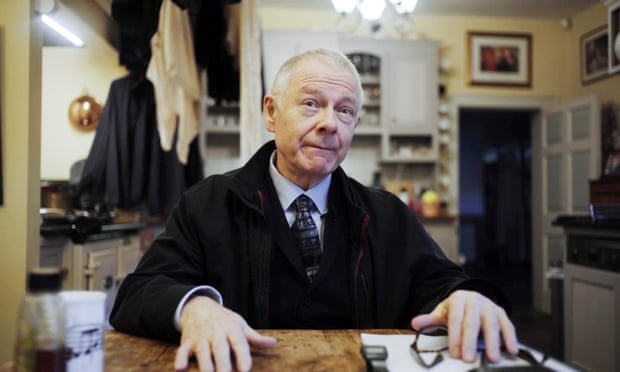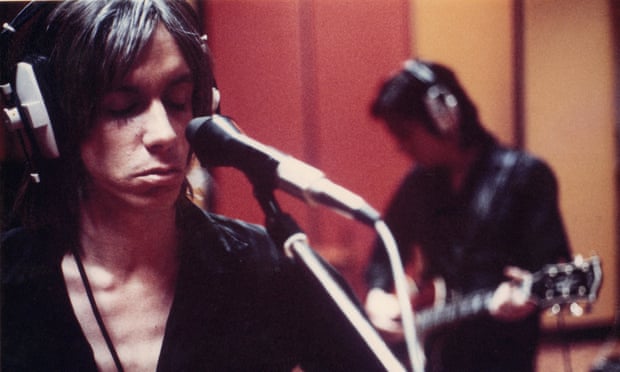 Do not destroy these markers. These standing stones mark an area used to bury radioactive wastes. Do not drill here. Do not dig here. The rock and water in this area may not look, feel, or smell unusual but may be poisoned by radioactive wastes. When radioactive matter decays, it gives off invisible energy that can destroy or damage people, animals, and plants.
Do not destroy these markers. These standing stones mark an area used to bury radioactive wastes. Do not drill here. Do not dig here. The rock and water in this area may not look, feel, or smell unusual but may be poisoned by radioactive wastes. When radioactive matter decays, it gives off invisible energy that can destroy or damage people, animals, and plants.
I saw the film
Containment in an exhibition in the Project Arts Centre called
Riddle of the Burial Grounds. The film is a documentary by Peter Galison & Robb Moss. It is about the containment of nuclear waste, in particular the spent fuel of nuclear reactors. Much of the film is about WIPP, the Waste Isolation Pilot Plant in New Mexico. This was set up as a secure storage site in which nuclear waste could be dumped and forgotten about.
A problem with nuclear waste is that it will remain dangerously radioactive for a very long time, longer in fact than the entire span of human history so far. It was decided by US federal authorities that WIPP would have to be marked in such a way that in the far future people would be deterred from digging there and inadvertently releasing the radiation. This is a bit difficult as the people who must be warned away may have no memory of our culture and have no language in common with us. An interdisciplinary team of scientists, linguists, science fiction writers, and various other types (sadly no
First World War bloggers) were recruited to try and come up with something that stood a convincing chance of warning off the people of the future. You get the sense that at the end of their efforts they are not really that convinced that they have anything will definitely or even probably work, but still they feel that they owe it to future generations to try.

The film is not just about WIPP, it also looks at where nuclear waste is currently stored. Typically the highly radioactive spent fuel of nuclear reactors is stored at the nuclear sites themselves, cooled in tanks of water to stop them catching fire and spreading fallout all over their surrounding areas. If a typical one of these sites were to lose its cooling waters then the spent fuel would probably render a vast area around the site uninhabitable. The film looks at one site where this almost happened, the Fukushima Daiichi nuclear power plant. The power plant there was severely damaged in the 2011 tsunami and did release radiation; the film shows a farmer whose irradiated cattle cannot be eaten and also looks at trees whose wood is too contaminated to be used in construction. However, the spent fuel rods in Fukushima did not lose their coolant, though at one stage it looked as though the water would boil off and expose the rods. The prime minister of Japan at the time of the tsunami is interviewed in the film; he says that if the coolant had boiled off and the rods had ignited then they would have released so much radiation that an area of Japan in which some 20 to 40 million people live would have become uninhabitable. He likened that outcome as being akin to losing a major war and said that it would have brought an end to Japan as an independent state.
The film also looks at some nuclear sites in the US, in particular the Savannah River Site, a huge complex of reactors and temporary storage sites in South Carolina. This lies on the Savannah river in an area of fascinating swampy wilderness. There is a lovely scene in the film with a camera panning along the lush tree-lined border of the river before a nuclear plant rears up through the vegetation. It is a fascinating juxtaposition of nature and a human construct of destruction.
The Savannah River Site seems to be a bit leaky. The film has a nice sequence showing a place where they keep wild turtles that have absorbed too much radioactive and so have to be taken away from people who might catch and eat them. There were also a couple of radioactive alligators swimming around. One of the locals interviewed bemoans the fact that the signs on the river tell people not to fish but do not say why, so people just assume it is some kind of proprietorial thing and catch the radioactive fish anyway. A thoughtful local clergyman bemoans the presence of the SRS on his doorstep but is powerless to do anything about it.
At WIPP, on the other hand, the locals appear to be quite excited about the prospect of the nation's nuclear waste stored nearby. Simple economics explains this: there is not really much going on in the area and until WIPP opened the local community was in steep decline. People further afield in New Mexico, through whose areas the waste would have to be transported, are a bit less keen on the project, but you can't make an omelet without setting off a chain reaction.

The problem with trying to communicate the warning to people in the future is a difficult one. Think of something like the hieroglyphic inscriptions on the walls of an Egyptian temple: but for the chance discovery of the Rosetta Stone in 1799 they would be completely incomprehensible to us. It is quite possible that in the future there will be no cultural continuity with our civilisation, so any kind of warning based on writing is potentially unreliable. Warnings based on pictures may also fail as different cultural norms would leave them open to misinterpretation. Another fear is that by marking the site and saying "Do not dig here" they run the risk of creating a gold rush as people rush to find whatever amazing stuff the ancient ones have buried. The suggested marking of the site with structures designed to conjure up unease also looked like they could backfire, as to me they looked like they would be fun places to explore. One proposal in particular may have been modelled on the Memorial to the Murdered Jews in Berlin, a structure whose design invites people in for inappropriate games of hide and seek or chasing, so that might not be so good for the land above WIPP.

The project involved some people involved in one of humanity's few other attempts to communicate with those lacking any cultural points of similarity with ourselves: the images and sounds of Earth contained on the Voyager probes. I think the Voyager probes are unlikely ever to be found by alien life, but if they are it will be so far in the future that humanity will in all likelihood no longer exist. The Voyager golden records will be all that is left of our civilisation and culture. It is appropriate therefore that they attempt to present a good face of us to whoever or whatever finds them. As one of the people in the film says, the markers at WIPP are more to do with something shameful and shortsighted of our species: the production of nuclear waste with no thought for the danger it would pose to the future. Yet the project is still a noble one, as the team tries to create something that will protect people living so far in the future that they may no longer be human in the way that we are.
I have talked more of the content of this film than the form. The film features plenty of talking heads but also atmospheric shots of the desert landscape above the WIPP site. We also have the swampy wildness of the Savannah River Site and the irradiated landscape around Fukushima. In the latter we see the abandoned towns and houses of humans but again more fascinating is the countryside, a landscape that is beautiful and peaceful in appearance but so contaminated that people are not allowed stay overnight within the zone.
Although the film covers a serious subject, it has a light tone. I particularly liked the animations illustrating scenarios the futurology people came up with for likely future incursions into WIPP, with a succession of jaunty looking people or robots realising too late that they have released the radioactive death contained at the site. I also liked the animation of a suggested attempt to create cultural awareness of the WIPP site through a proposed cartoon character called Nicky Nuke, who would have an associated theme park (Nukeland or something like that), which reminded me of the Mickey Eye Park in the comic
Seaguy, in that it was clearly a deranged rip-off of Disneyland.
All in all the film leaves the viewer with a sense that something will have to be done with nuclear waste and that the waste already produced cannot be expected to remain in water cooled tanks for the hundred thousand or more years it will take it to become harmless. That something is probably burying it somewhere like WIPP, in a remote and geologically stable location. Warning future generations not to excavate the site is difficult or impossible to do effectively, but there is no real option but to attempt it.
I also left the film thinking that if the USA has all that waste and is having problems working out what to do with it and how to store it safely in the meantime, what about more ramshackle countries that have also decided to go down the nuclear road. I'm thinking of Pakistan in particular here, but you would also have to worry about the long term safety of nuclear waste in the likes of Kazakhstan, Russia and Iran. And when you are talking of stuff that takes over a hundred thousand years to become safe you do have to think of the very long term.
Containment Trailer 1 from Robb Moss & Peter Galison on Vimeo.
image sources:
Spikes (
Containment film website)
nuclear power plants map (Maps on the Web)
Voyager Golden Disc (Wikipedia)
Memorial to the Murdered Jews of Europe (Wikipedia)
 The other thing that annoyed me was the continuous claims by people in the film that Little Richard's career had been sabotaged by the rock establishment who had then gone on to write him out of history. That kind of semi-conspiratorial thinking seems to be a staple with discussions of cult figures. It generally doesn't add up, and it particularly does not in this case. As the film's use of archive footage makes clear, Richard seems to have spent most of his life appearing on TV chat shows, which is pretty good going for someone written out of history. And as to his career being sabotaged by the rock establishment, firstly it was a general feature of the early rock 'n' rollers that they didn't really remain relevant that long, not because of a conspiracy but because music moved on and they didn't. But in Little Richard's case, if anyone sabotaged his career that person was Little Richard, whose problematic religious beliefs kept causing him to give up making music (because it meant he thought rock 'n' roll was the music of the Devil).
The other thing that annoyed me was the continuous claims by people in the film that Little Richard's career had been sabotaged by the rock establishment who had then gone on to write him out of history. That kind of semi-conspiratorial thinking seems to be a staple with discussions of cult figures. It generally doesn't add up, and it particularly does not in this case. As the film's use of archive footage makes clear, Richard seems to have spent most of his life appearing on TV chat shows, which is pretty good going for someone written out of history. And as to his career being sabotaged by the rock establishment, firstly it was a general feature of the early rock 'n' rollers that they didn't really remain relevant that long, not because of a conspiracy but because music moved on and they didn't. But in Little Richard's case, if anyone sabotaged his career that person was Little Richard, whose problematic religious beliefs kept causing him to give up making music (because it meant he thought rock 'n' roll was the music of the Devil).


:quality(70)/cloudfront-eu-central-1.images.arcpublishing.com/irishtimes/HQRCWURP7ZJ2XEIKFOHNMZEX6Q.jpg)






/arc-anglerfish-tgam-prod-tgam.s3.amazonaws.com/public/M6Q7E3GWVFFANJZIR2D4LJL42E)





